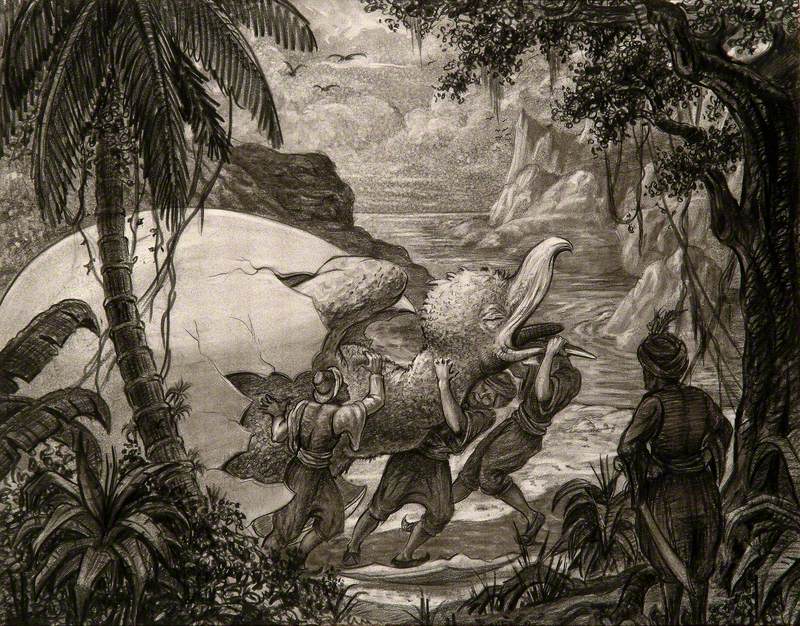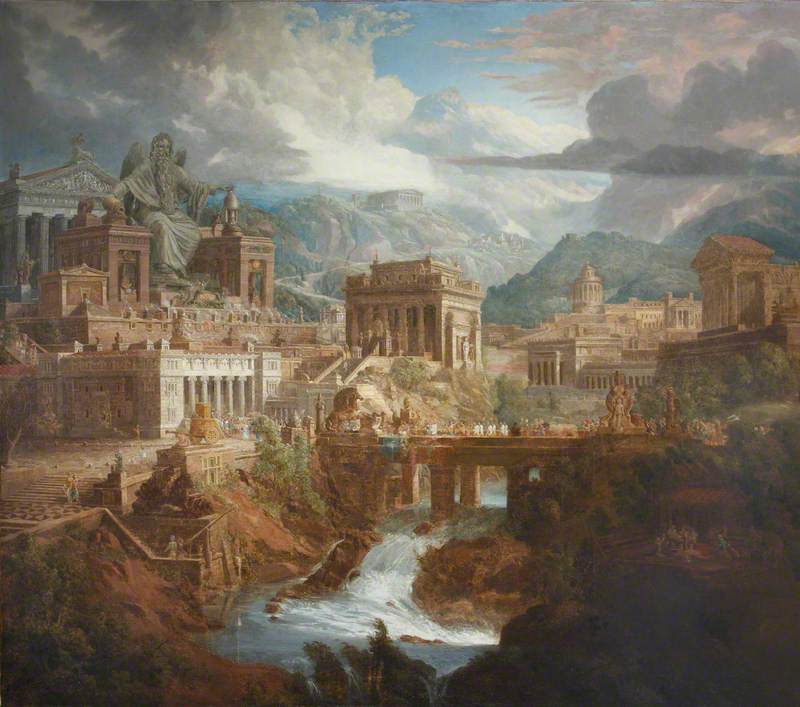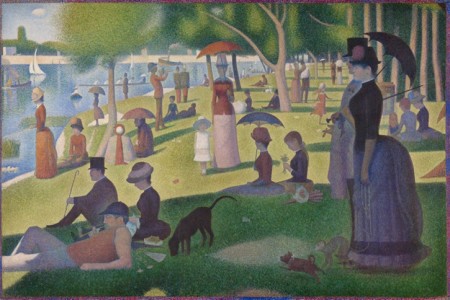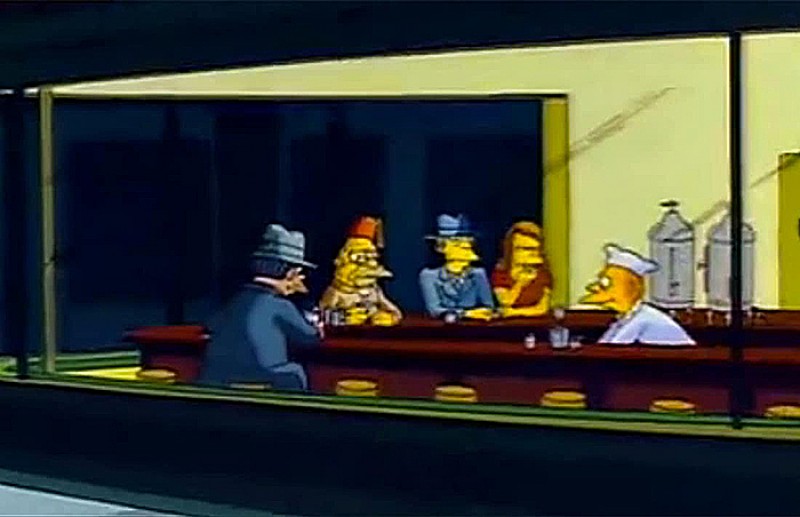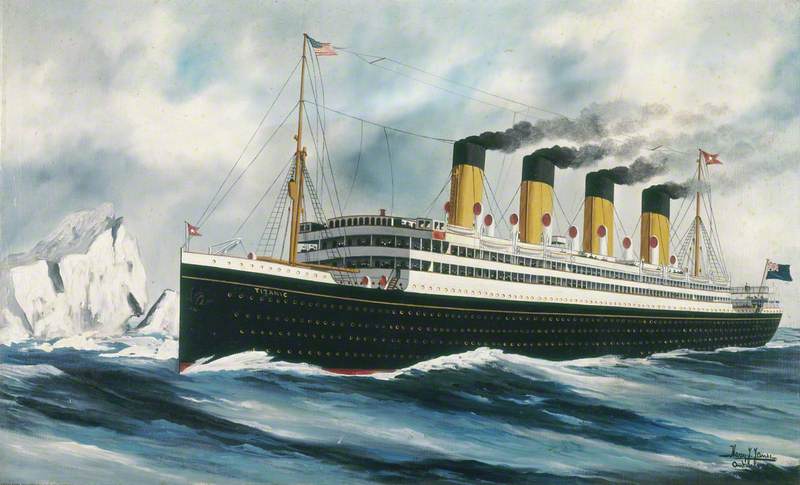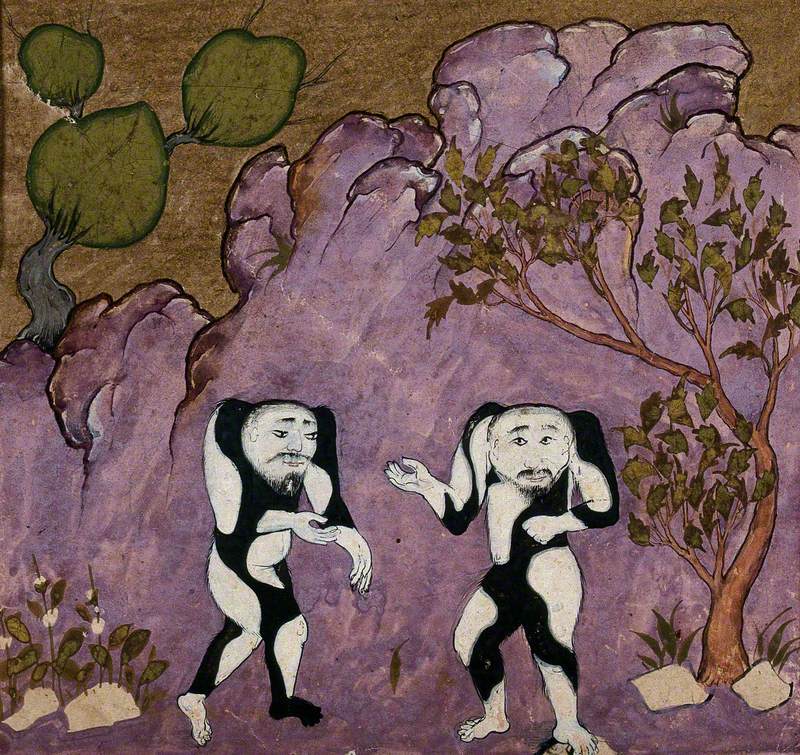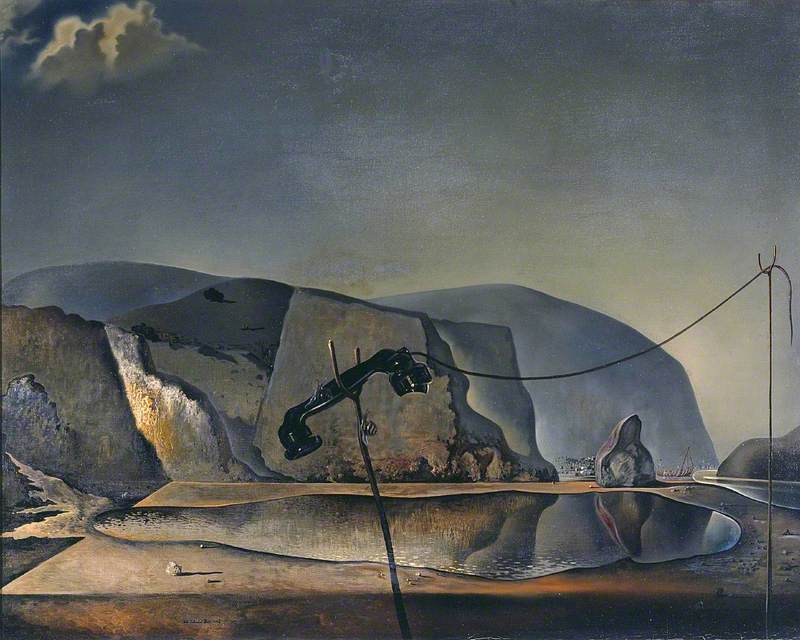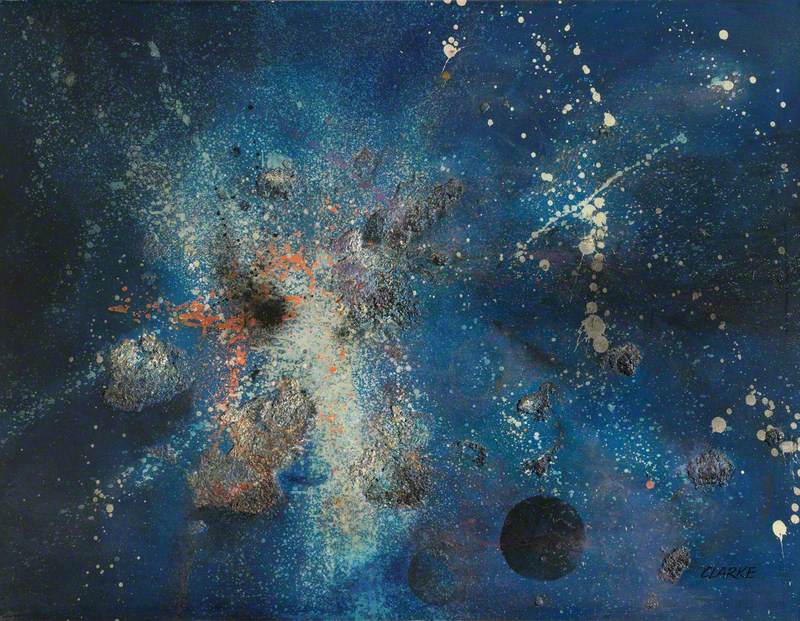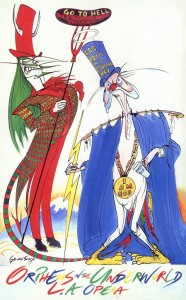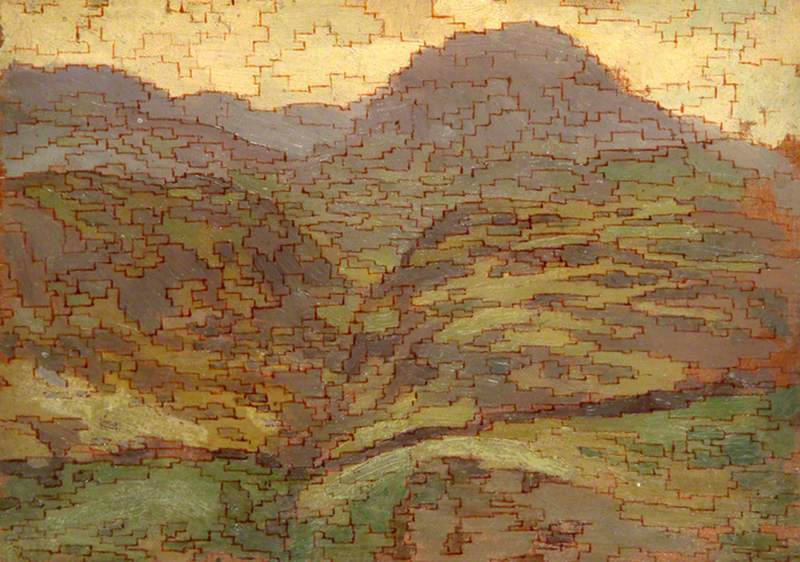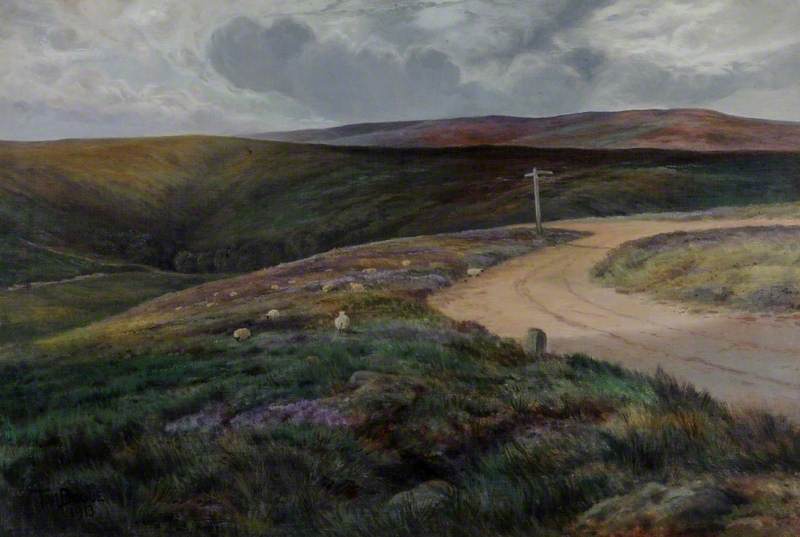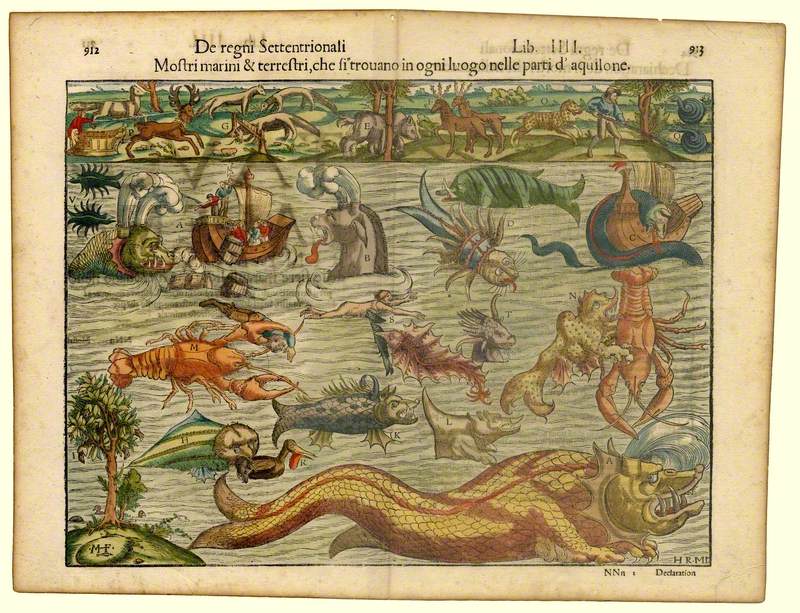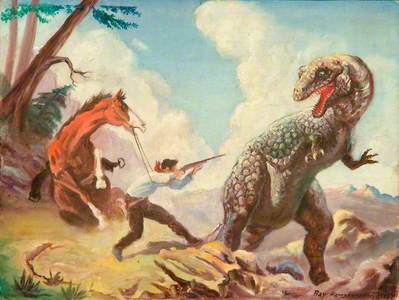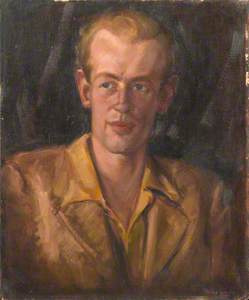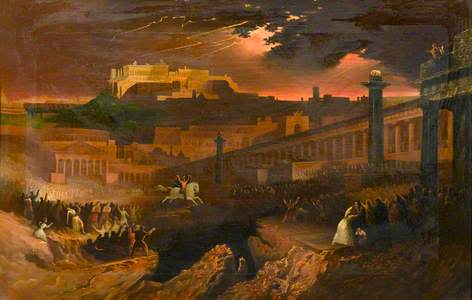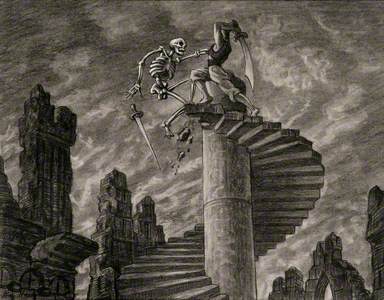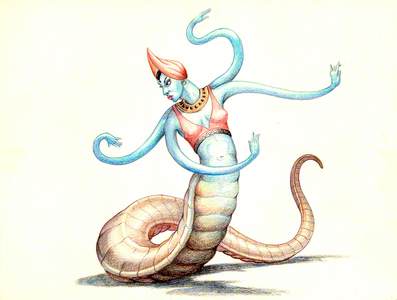As one of the most legendary special effects artists of all time, Ray Harryhausen (1920–2013) was responsible for creating some of twentieth-century cinema's most magical moments.
Allosaurus Attacking a Cowboy
1938/1939
Ray Harryhausen (1920–2013) 
His stop-motion animation brought to life mythological legends, alien invaders and prehistoric creatures across several decades, until his final film Clash of the Titans in 1981.
One of the most remarkable aspects of Ray's work was his status as a one-man industry; as well as building and animating his creations, he was also responsible for designing the initial concepts for his creatures and films. What's more, the importance of his work upon the final picture left him as de facto director on many of his pictures; it was Ray's original vision which drove classic films such as Jason and the Argonauts, One Million Years BC and The 7th Voyage of Sinbad.
Inspiration struck Ray when he was taken to see King Kong in 1933; the film had an immediate impact upon him, and he strove to discover just how such a magnificent beast had been brought to life on the big screen. 'Kong' animator Willis O'Brien was hugely influenced by Gustave Doré; in turn, Ray sought to emulate Doré's style within his own early artworks.
'Gustave Doré, it has always seemed to me, was a motion-picture art director born before his time. In the early days of film production, his influence on many directors, and certainly art directors, was immense. His imagination and his talent for dramatic composition is typified by his unique way of focusing light onto the centre of the picture, by creating a dark foreground and background and highlighting the central action. The effect is almost cinematic.' – Ray Harryhausen
The outbreak of the Second World War saw Ray drafted into Frank Capra's film unit. While using any opportunity to further his understanding of filmmaking during his service, he also made the most of being stationed in New York by scouring antique shops for first edition Doré books and engravings.
Alongside Doré, Ray was heavily influenced by the dramatic paintings of John Martin. Together with Doré, Ray saw Martin's work as one of the precursors of modern cinema. Interestingly, Martin's apocalyptic artwork was derided as being overly populist by contemporary commentators – a criticism which was often directed at Ray's own films. Both artists are now rightly celebrated as visionaries who created art that could be appreciated within wider the realm of popular culture.
'His use of depth and lighting, and also his imaginative and romantic visions not only attracted me because of their style, but also engaged my imagination. Martin was a painter of spectacular and apocalyptic scenes, and his work hinted the tradition of Turner's historical paintings.' – Ray Harryhausen
After working with O'Brien on the Academy Award-winning Mighty Joe Young in 1949, and creating his own series of iconic black and white movies in the 1950s, Ray was given the opportunity to adapt Scheherazade's Arabian Nights for the big screen.
Harryhausen had long felt that stop-motion animation could be used to tell fantastical stories in a way that audiences had never seen before, and strove to bring mythological creatures such as the Cyclops, Roc and Snakewoman to life.
Sinbad Fights the Skeleton
1957
Ray Harryhausen (1920–2013) 
He presented his original concept sketches for Sinbad the Sailor to producers, as a demonstration of how he envisioned key sequences to look within the final film. The resulting movie was to be the first major stop-motion picture to be filmed in colour, and was a resounding success.
The 7th Voyage of Sinbad (1958) is now seen as one of the most influential fantasy movies of all time, with these initial concept sketches showing just how far Ray's original visions can be seen in the final film.
'Ray's films, his fantastic visions, his dreams, waking nightmares, whatever he has put into the collective consciousness over the years have really jump-started the imaginations of a whole generation of film-makers. We all owe Ray a great debt. Thank you.' – James Cameron
Throughout his life, Ray created concept art for a number of films which were never realised. One of these was The Adventures of Baron Munchausen – the images below show rare examples of Ray's watercolour work, which will be showcased among hundreds of other lost treasures in a 2019 book by Foundation trustee John Walsh entitled Harryhausen: The Lost Movies.
Baron Munchausen Arrives on the Moon
1948
Ray Harryhausen (1920–2013) 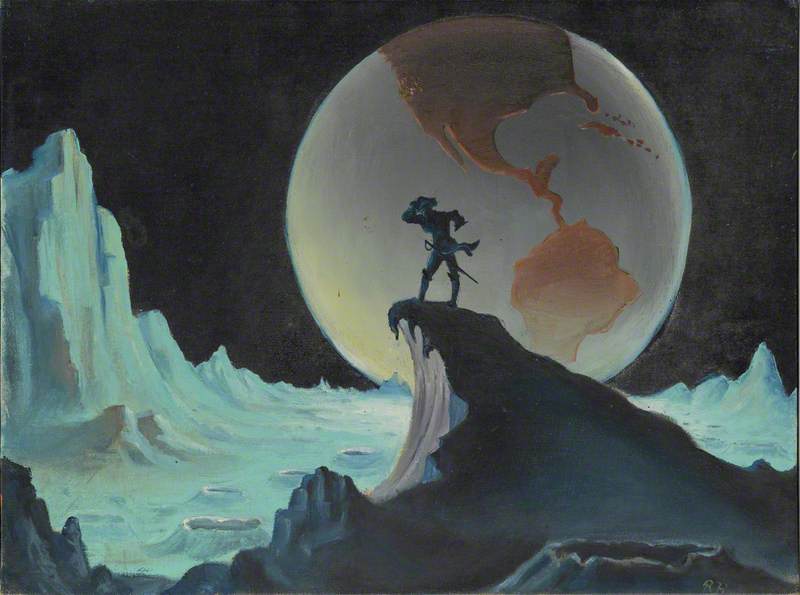
Shortly after relocating to the UK in the early 1960s, Ray was to purchase the Joseph Gandy painting Jupiter Pluvius, which he hung in his London home. This spectacular work, completed in 1819, depicts a huge, sprawling, ancient city; dominated by a colossal seated statue of the god Jupiter. The architectural scene depicted was a direct influence on Ray's vision of the sprawling Greek city of Argos in Clash of the Titans (1981).
'Gandy is a relatively unknown painter but for sheer spectacle there are few others who come anywhere near him. This painting is one of my most prized possessions and has been a huge inspiration to me throughout my career, teaching me to think big and give my inspiration free rein.' – Ray Harryhausen
Although Ray Harryhausen is sadly no longer with us, his legacy lives on through the 50,000-item strong collection of models and artwork, cared for by The Ray and Diana Harryhausen Foundation. His original concept sketches were showcased at the exhibition 'The Art of Ray Harryhausen' at Tate Britain in 2017, framed alongside the work of his inspirations, John Martin and Gustave Doré.
As we look towards marking Ray's centenary with an exhibition at the National Galleries of Scotland in the summer of 2020, it is clear that his legacy as a visionary artist is one which should be celebrated by film fans and art lovers alike.
Connor Heaney, Collections Manager for The Ray and Diana Harryhausen Foundation
A selection of Ray Harryhausen's work is available as prints in the Art UK Shop. All purchases support The Ray and Diana Harryhausen Foundation.
Editor's note (2022):
Harryhausen's original concept sketches were showcased at the exhibition 'Ray Harryhausen: Titan of Cinema' at the National Galleries of Scotland from 2020 to 2022, alongside the work of John Martin and Gustave Doré. The largest display of Ray's work to date, this exhibition showcased hundreds of items from his collection, from early experiments and drawings through to an array of his most iconic stop-motion creatures.
Ray's 102nd birthday will be marked by the first Ray Harryhausen Awards on 29th June 2022, honouring animation excellence amongst contemporary filmmakers inspired by his work. It is clear that his legacy as a visionary artist is one that should be celebrated by film fans and art lovers alike.



